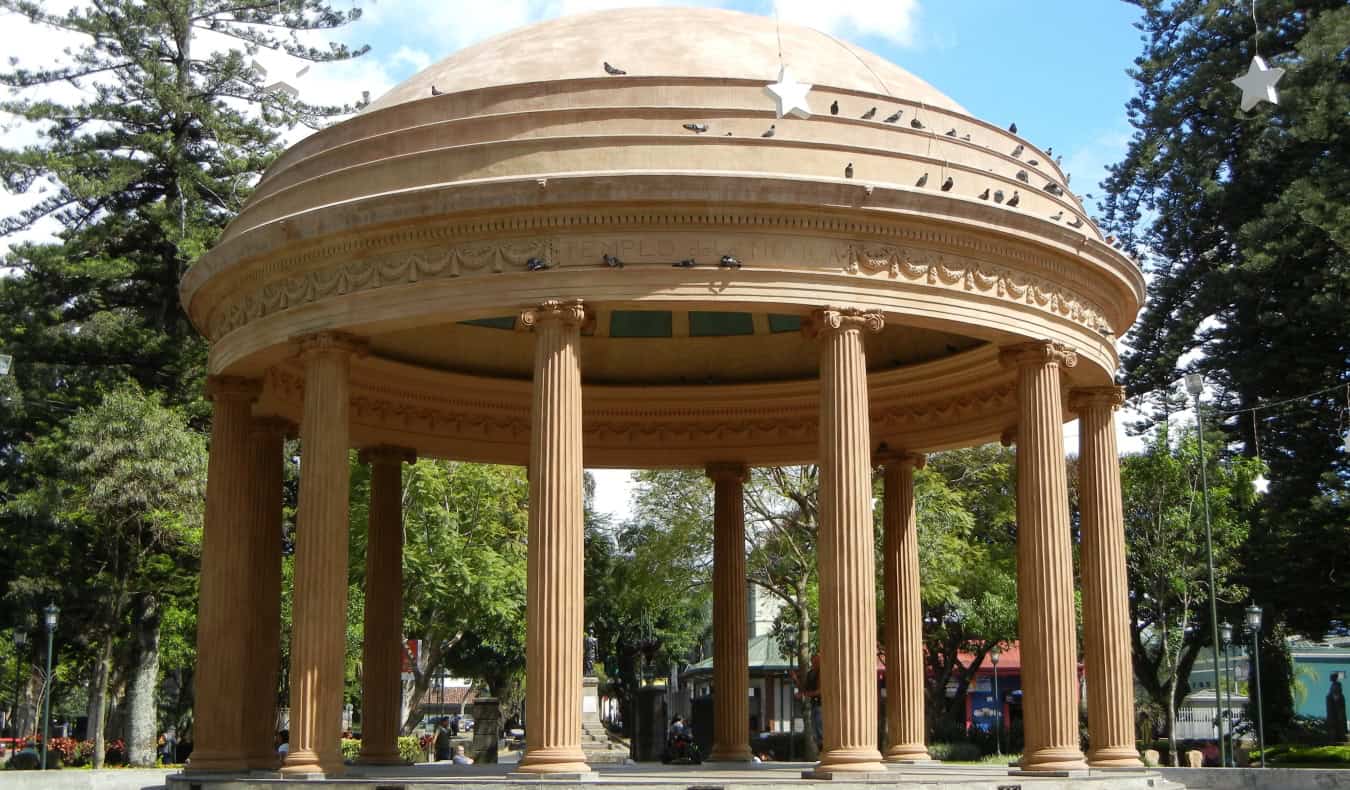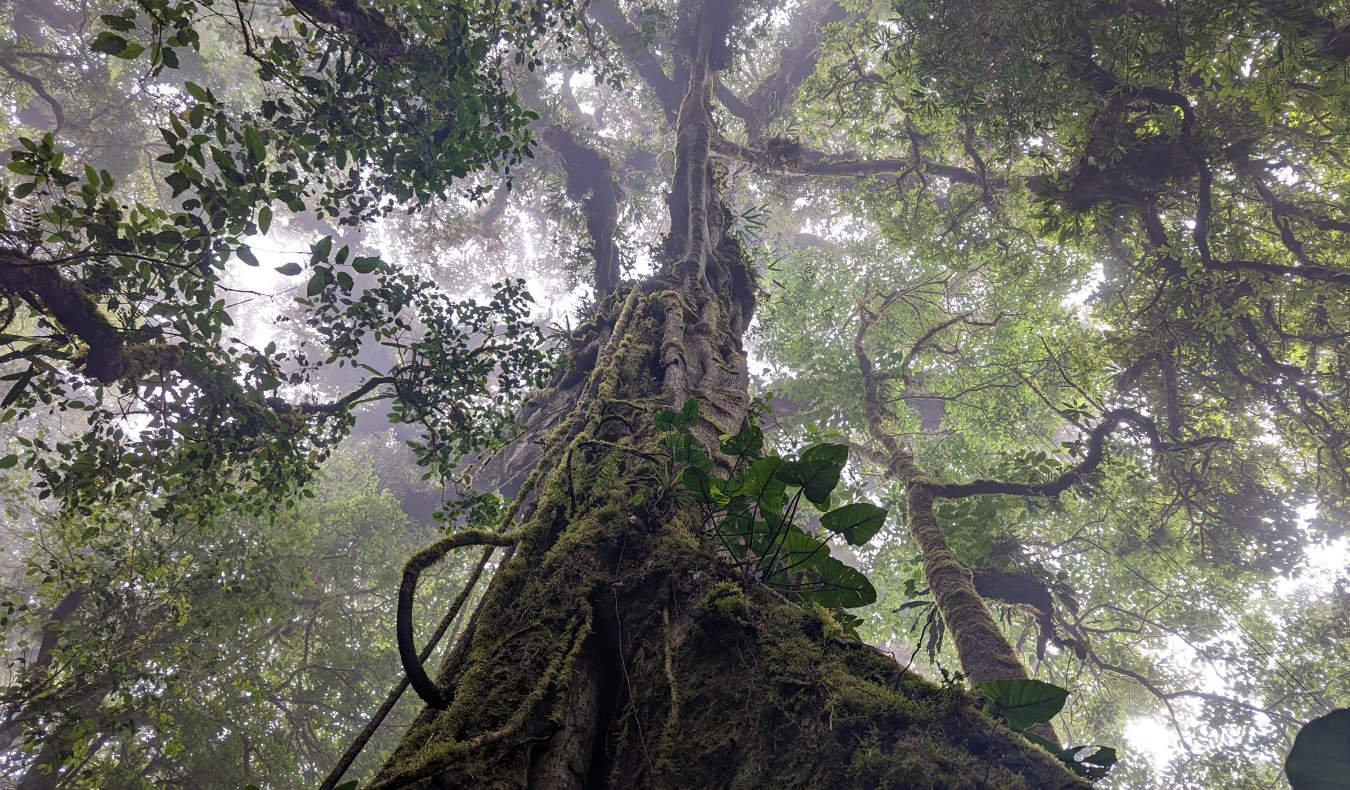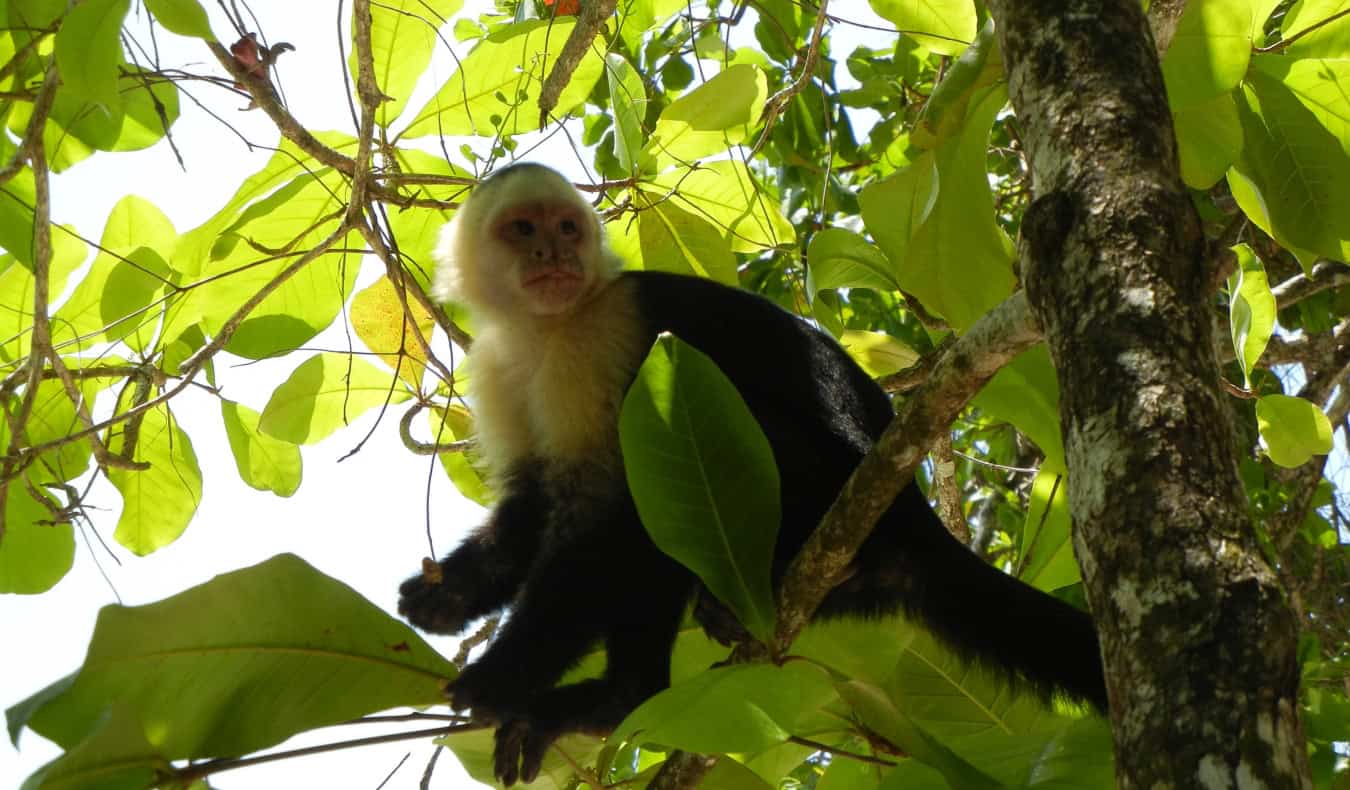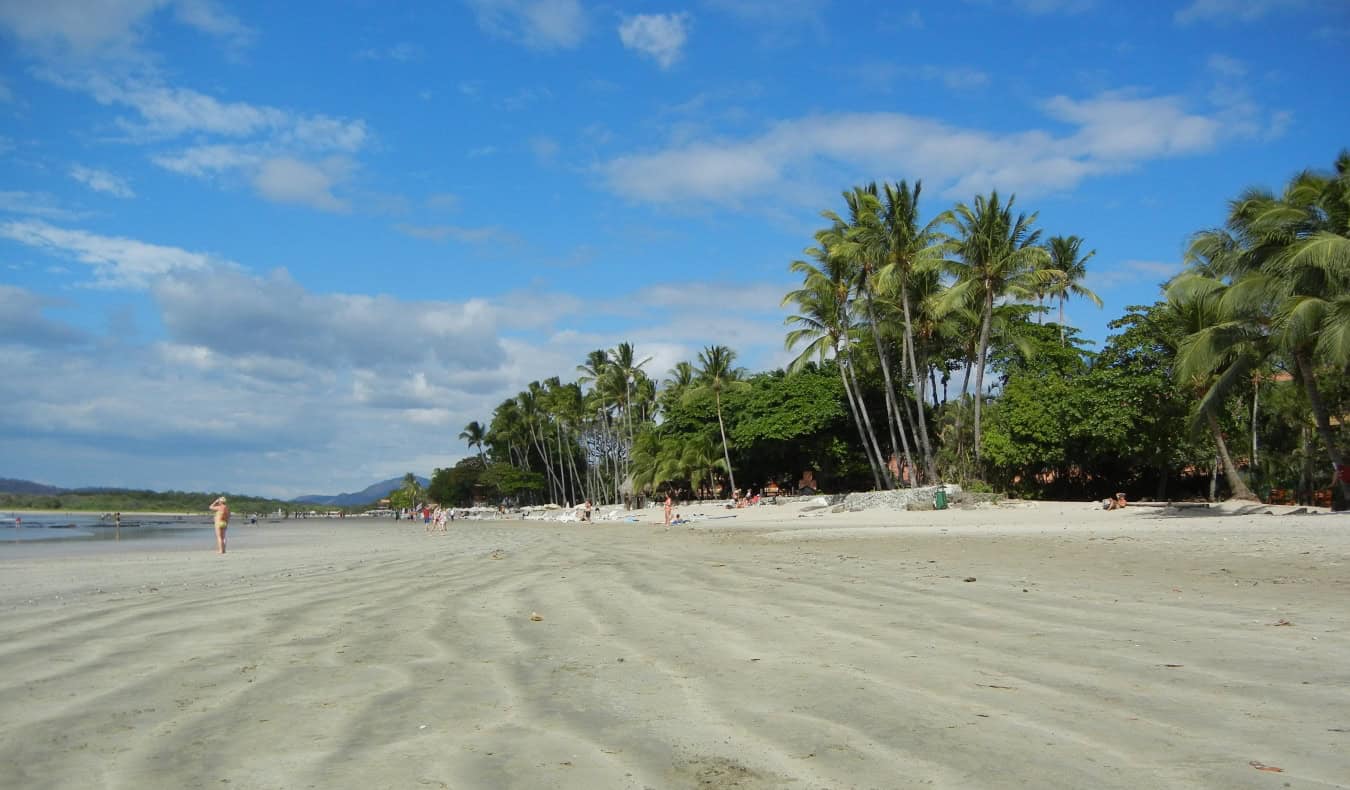As the country that sparked my wanderlust, Costa Rica will always have a special place in my heart. The lush jungles, the stunning waterfalls, the incredible wildlife, and the super friendly locals who have a love for love – it’s all just great. Costa Rica a beautiful, beautiful country.
It’s also a perfect destination to road trip. Since distances aren’t too long, you can easily get a good feel for some of the main areas in the country in one week. (If you’ve got more time, great! You can extend your stays in places or even add on more destinations. I’ll share a few recommendations at the end).
But, even with just seven days, you can cover a lot of ground. The freedom of having your own wheels means that you won’t be beholden to bus schedules or end up forking out a lot of money for expensive tourist shuttles. That means you’ll save both time and money.
To help you plan your trip, here’s my ideal one-week Costa Rica road trip itinerary:
Where to Rent a Car in Costa Rica
My go-to rental car company in Costa Rica is Vamos. They allow additional drivers for no extra fee, have great customer services, and their prices are reasonable.
You can click here to get a quote. (You’ll get 5% off by using that link too!).
If Vamos doesn’t have what you’re looking for, try Discover Cars. They compare prices from thousands of companies to help you find the best deal. You can use the widget below to find a deal:
Once you get a car, take photos and video of any scratches or dents. That way you have evidence proving you didn’t cause them should the car rental company ask (they usually won’t but it’s always better to be prepared).
Days 1–2: San Jose


You’ll likely be flying in and out of the capital, San Jose. That means you can return your rental car to the same location when you fly home (which is cheaper than dropping it off somewhere else). Many people skip right over the capital, opting to just stay overnight and head out the next morning to greener pastures but I think it’s worth two nights. All the country’s best museums are here, so you can learn the history of the country before embarking onwards. That said, depending on when your flight arrives, you could just do one night here and add more time somewhere else.
Things to do in San José:
- Visit the Costa Rican National Museum – If you only visit one museum in the city, make it this one. Housed in the fortress that was home to the (now defunct) Costa Rican military, the permanent exhibition traces Costa Rican history from Pre-Columbian times to the present day. It’s in-depth and extremely well done, with bilingual explanations.
- Admire Costa Rica’s art – The Museum of Costa Rican Art is a small museum that offers a variety of permanent and temporary exhibitions of national and international artists. If you’re into contemporary art, don’t miss the Museum of Contemporary Art and Design (MADC), where you can see the work of cutting-edge Costa Rican and Central American artists.
- Visit the markets – The Central Market and The Municipal Crafts Market are good places to buy souvenirs and browse colorful market stalls. Plus, you can check out the local food scene at the Central Market (or take a guided tour for a more in-depth experience).
- Take a free walking tour – If you want to learn more about the history of San Jose while taking in the sights, take a free walking tour. You’ll hear all about “ticos” culture (a term used to describe native Costa Ricans), visit some secret spots where the locals hang out, and see some street art along the way. San José Free Walking Tour is the main operator — just don’t forget to tip your guide at the end!
For more things to see and do, here’s my free travel guide to San Jose.
WHERE TO STAY:
- Selina San Jose: This upscale hostel is in a great location between key neighborhoods. It hosts a lot of cool events, there are dorms and private rooms, and there’s a restaurant on-site too.
- Auténtico Hotel: This laidback hotel has a beautiful pool, bright rooms, and helpful staff. I used to stay here with our groups when I ran tours in Costa Rica. Everyone loved it!
For more accommodation suggestions, here are my favorite hostels in San Jose!
Days 3: La Fortuna / Arenal


After you’ve explored the capital, it’s time to drive three hours to the town of La Fortuna (make sure to stop at La Paz Waterfall Gardens on the way). The town sits in the shadow of Arenal, Costa Rica’s most iconic volcano. The area has tons of activities, and at the end of an active day, there’s nothing better than enjoying the sunset views over the lake.
La Fortuna is one of the country’s most popular destinations (with higher prices that match its popularity). Despite that, it’s still one of my favorite places in the country. Just don’t get lost in the jungle like me!
Things to do in La Fortuna:
- Hike in Arenal Volcano National Park – This vast national park spans 121 square kilometers (46 square miles) and is home to both Arenal Volcano as well as the inactive Chato Volcano that last erupted thousands of years ago. The national park has endless hiking trails, including the aptly named Lava Flow Trail, where you can hike the lava flows from the devastating 1968 eruption of Arenal.
- Swim at the base of La Fortuna waterfall – This stunning waterfall is huge, dropping almost 75 meters (250 feet) into a big pool of water at its base. Swimming in the cold water is super refreshing after spending some time hiking in the hot sun. Make sure you have sturdy footwear as the walk down the steep, long staircase can get slippery.
- Relax in the famous hot springs – Thanks to all the geothermal activity in the area, there are a lot of hot springs here. They range in price and quality, from free all the way up to $89 USD at Tabacón Resort. You can also take a packed day tour that includes hot springs, hiking around Arenal Volcano, La Fortuna waterfall, and enjoying a traditional lunch at the Maleku indigenous reserve.
- Take a bird-watching tour – This area is one of the best in the country for bird watching, with almost all of Costa Rica’s 900 species of birds represented here. It’s always best to go with an experienced local guide as you’ll see many more birds that way (they know where specific species of birds like to hang out and can point out camouflaged birds).
- Do some adventure activities – This area is one of the country’s hot spots for adrenaline activities. Some examples of things you can do include canyoning, white-water rafting, and zip-lining, or if you have the time (and money, as these activities are pricey) do them all!
WHERE TO STAY:
- Selina La Fortuna: Selina’s La Fortuna location is an entire complex featuring an outdoor pool, stylish private rooms, a poolside restaurant, and lots of organized activities (including fitness and yoga classes). It’s walking distance from everything too.
- Hotel Arenal Rabfer: This hotel offers a nice pool, clean rooms with little balconies, and a great complimentary breakfast at the café next door.
For more things to see and do, check out my free travel guide to Arenal here.
Days 4: Monteverde


Roughly a 3.5-hour drive away, Monteverde is one of my favorite places in Costa Rica. The entire area is covered in a lush cloud forest that just feels magical. The tropical forest is shrouded in mist — quite literally, as they’re in the clouds. Because it’s constantly so wet, Monteverde is incredibly biodiverse. Naturally, it’s one of the largest eco-tourism hubs in the country, with birders flocking here to spot the elusive quetzal bird with its stunning emerald and ruby red plumage. There are a lot of adventure activities here too. (Some of the best coffee I ever had in my life was from here.)
Things to do in Monteverde:
- Hike in the cloud forest – There are several sections of the cloud forest that are open to visitors: Monteverde Cloud Forest Reserve, Santa Elena Cloud Forest Reserve, and the Children’s Eternal Rainforest. All are great, with trails that are pretty easy, well-marked, and well-maintained. If you really want to see wildlife, it’s best to go with a guide who can show you animals and birds hidden in the dense canopy.
- Take a night tour of the forest – This is a cool way to see a different side of the jungle. Your guide will point out all the nocturnal animals (including tarantulas and armadillos), insects, and plants that you would never be able to find on your own in the dark!
- Go zip lining – The longest zip line in the country can be found here (it’s an entire mile long)! Gliding through the canopy is a unique way to see the jungle from a different perspective. If you’re an adrenaline junkie, don’t miss this!
- Walk the hanging bridges – If zip lining isn’t exactly your speed, you can safely stroll hanging suspension bridges that are built through the upper layer of the canopy. It’ll give you a view off the forest floor without having to swing through it.
- Take a coffee tour – Monteverde is famous for its production of artisanal, organic, and sustainable coffee. Take a tour to learn about every stage of the process, from seed germination to roasting. There are a few different tours here, but the only one dedicated entirely to coffee is the Café Monteverde Farm & Roastery Tour. It’s really interesting and educational, even if (like me) you’re not a coffee drinker.
WHERE TO STAY:
- Selina Monteverde: This Selina location is literally next to the cloud forest. It’s a beautiful and tranquil location set in the trees with relaxing activities, a lush inner courtyard with hot tubs, and a separate co-working area.
- Monteverde Villa Lodge: This quiet hotel is within walking distance to the town, offering complimentary breakfast and cozy rooms that have their own outdoor seating area.
For more things to see and do, check out my travel guide to Monteverde here.
Days 5–6: Manuel Antonio


Drive about 3.5-4 hours to Manuel Antonio, stopping on the way at the Tarcoles River Bridge to see crocodiles (just don’t feed them). Manuel Antonio is a popular beach destination on the Pacific coast, known for its white-sand beaches, warm blue waters, and wildlife (especially sloths and monkeys). While tourism has picked up here in recent years, it’s still largely a lazy town where the main activities are lounging in the sand by day and enjoying a beachside cocktail by evening (you get epic sunsets here).
Things to Do in Manuel Antonio:
- Visit Manuel Antonio National Park – Spanning 1,980 hectares (4,900 acres), this park combines rich rainforest and picturesque beaches. Walk the trails and boardwalks to see plenty of capuchins, sloths, basilisk lizards, iguanas, and squirrel monkeys. The best beaches are in the park so don’t miss a visit here. There’s a cap on how many people can visit, so be sure to get your tickets online in advance or go with a guided tour.
- Lounge on the beach – Besides the beaches in the park, there’s also Playa Espadilla, a long stretch of beach that abuts the small town. It’s the perfect place to relax with a book, and it’s just steps away from all the town’s main eateries.
- Learn to surf – There are tons of surf schools that set up shop right along Playa Espadilla. You can pay for a one-off lesson or board rental right on the beach or enroll in a surf school if you’re looking for something more comprehensive.
- Take a mangrove tour – Hop on a boat to explore the protected mangrove channels around Damas Island, home to white-faced monkeys, crocodiles, spectacled caimans, boa constrictors, crab-eating raccoons, and pygmy anteaters. You can also take a kayak tour to get even closer to this unique environment.
WHERE TO STAY:
- Pura Natura Lodge Manuel Antonio: This chill nature lodge offers simple but clean dorms, private rooms, and full apartments within walking distance of the small town, the beach, and the national park.
- Teva Jungle Hotel and Hostel: An eco hotel set right next to the forest, they offer private hiking trails, a pool with poolside bar, permaculture gardens, a shared kitchen, and an excellent restaurant.
For more things to see and do, check out my travel guide to Manuel Antonio here.
Day 7: Head back to San Jose
Leave Manuel Antonio in the early morning to drive back to San José. It’s about a 4.5-hour drive, but plan for more depending on traffic. If you are caught in traffic or are delayed for any reason, contact your rental car company to avoid a penalty.
Before you return the car, make sure that your fuel gauge is at the right level, or else head to a gas station before you drop it off. The company’s representative will inspect your vehicle with you and then process the deposit reimbursement.
8 Costa Rica Road Trip Tips


1. Understand car rental insurance
Costa Rica has mandatory third-party insurance for car rentals, so check that this cost is included in your rental quote. It’s often left out, meaning you could be surprised by the bill at the end.
It’s also legally required to have a collision damage waiver
